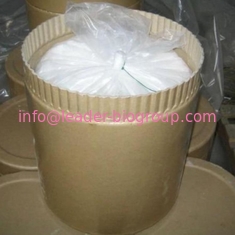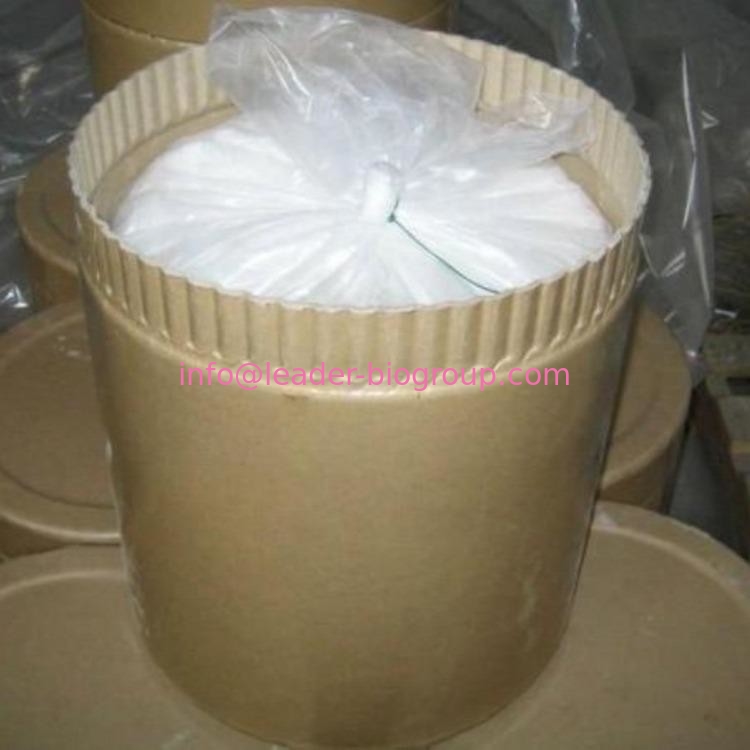| Product Name: |
Potassium Phosphate Monobasic |
| Synonyms: |
Potassium phosphate monobasic, anhydrousFCC, ≥ 98.0% (Assay, dried basis);Potassium phosphate monobasic, anhydrousACS reagent, ≥ 99.0% (Titration);Potassium Phosphate, Monobasic, Molecular Biology Grade;Potassium dihydrogen phosphate cryst. suitable for the biopharmaceutical production EMPROVE bio Ph Eur,BP,JPC,NF;Potassium dihydrogen phosphate anhydrous 99.995 Suprapur;PHOSPHATE STANDARD SOLUTION;PHOSPHATE LOW NO 1;PHOSPHATE LOW NO 2 |
| CAS: |
7778-77-0 |
| MF: |
H2KO4P |
| MW: |
136.085541 |
| EINECS: |
231-913-4 |
| Product Categories: |
metal phosphate compound;Food additives;Chemical Synthesis;Inorganic Salts;Materials Science;Metal and Ceramic Science;Anionic SolutionsChromatography;Anionic Standard SolutionsAlphabetic;Application CRMs;Ion Chromatography;Potassium;Potassium Salts;Salts;Synthetic Reagents;Inorganics;Ion Chromatography Standards;P;PER - POLA |
| Mol File: |
7778-77-0.mol |
 |
| |
| Potassium Phosphate Monobasic Chemical Properties |
| Melting point |
252.6 °C (lit.) |
| Boiling point |
> 450 °C |
| density |
2.338 g/mL at 25 °C (lit.) |
| storage temp. |
Store at RT. |
| solubility |
H2O: 1.5 M at 20 °C, clear, colorless |
| form |
powder |
| color |
White transparent |
| Specific Gravity |
2.338 |
| Odor |
Odorless |
| PH |
4.2-4.6 (20g/l, H2O, 20℃) |
| pka |
(1) 2.15, (2) 6.82, (3) 12.38 (at 25℃) |
| Water Solubility |
222 g/L (20 ºC) |
| λmax |
λ: 260 nm Amax: 0.046
λ: 280 nm Amax: 0.040 |
| Sensitive |
Hygroscopic |
| Decomposition |
253 °C |
| Merck |
14,7659 |
| InChIKey |
GNSKLFRGEWLPPA-UHFFFAOYSA-M |
| CAS DataBase Reference |
7778-77-0(CAS DataBase Reference) |
| EPA Substance Registry System |
Monopotassium phosphate (7778-77-0) |
| |
| Potassium Phosphate Monobasic Usage And Synthesis |
| Introduction |
Potassium dihydrogen phosphate is a kind of highly efficient and rapid dissolving phosphorus and potassium compound fertilizer containing, phosphorus and potassium, two elements for providing the necessary nutrients for plant growth and development, being applicable to any soil and crop, especially being applicable to the treatment of regions of simultaneous lack of phosphorus and potassium nutrients and phosphorus-preferred and potassium-preferred crops. It is mostly used for root top dressing, seed soaking, and seed dressing, being able to yield significant effect. If it sued for the roots fertilization, it can be used as basal fertilizer, seed fertilizer or moderate-late phase topdressing.
Its aqueous solution can react with silver nitrate, generating yellow phosphorus dihydrogen phosphate precipitation, being able to be used as a differential reaction.
As potassium dihydrogen phosphate is expensive, there is less agricultural production. Therefore, it is generally applied of the soaking or root top dressing for application. For crop soaking, the commonly used concentration is 0.2%. After dipping 18~20h, the field can be sown after drying. For root top dressing, if spraying alone, the highest concentration can be 0.5%. If within the range of jointing-booting stage of wheat and rice, we can spray for 1 or 2 times during the cotton, rape early flowering phase. Upon spraying 2 times, the interval can be about 7 to 10 days with the liquid usage amount per acre being about 100~150kg. It can also be combined with other nutrients to be formulated into compound nutrition for foliage top-dressing. For example, the leaf fertilizer used for field crops in North China has its main ingredient be exactly potassium dihydrogen phosphate, urea and the addition inclusion of some trace elements. In recent years, the use of blade complex nutrition also mostly adopts the potassium dihydrogen phosphate as a high concentration and excellent hydrophilic phosphate and potassium fertilizer source. With the development of facilities of horticultural crops and drip irrigation, fertilizer irrigation, the increasing daily demand for potassium dihydrogen phosphate is also increasing. |
| Solubility in water |
Dissolved grams per 100 ml of water at different temperatures (° C):
14.8 g/0 ° C; 18.3 g/10 ° C; 22.6 g/20 ° C; 28 g/30 ° C; 35.5 g /
50.2 g/60 ° C; 70.4 g/80 ° C; 83.5 g/90 ° C |
| Uses |
(1) As feed phosphorus additives; In the food industry, it is used for the manufacture of baked goods, for leavening agent, flavoring agent, fermentation additives, nutritional fortifiers, yeast food. Also used as a buffer, chelating agent.
(2) It can be used as fertilizer, flavoring agent and the culture agent of brewing yeast; used for the preparation of buffer solution, also used in medicine and manufacturing of potassium metaphosphate.
(3) It can be used for the fertilization of rice, wheat, cotton, rape, tobacco, sugar cane, apple and other crops.
(4) It can be used as chromatography reagents and buffer, but also for the synthesis of medicine.
As a highly efficient fertilizer, it is suitable for all kinds of soil and crops. It can also used as a bacterial culture agent, the flavoring agent for the synthesis of sake and the raw material for making potassium metaphosphate. In medicine, it is used for the uric acidification as a nutritional agent.
(5) Used as feed nutritional supplements;As a quality improver, it has effects of improving the complexation metal ions and pH value, increasing the ionic strength of food, and thus improving the adhesion and water holding capacity of food. China provides that it can be used for wheat flour with the maximum usage amount of 5.0g/kg and 2.0 g/kg in the beverage. |
| Toxicity |
Adl: 0 to 70 mg/kg (calculated as phosphorus, FA0 HO, 1985). It is generally recognized as being safe (US Food and Drug Administration, 1975). Cooked meat, cooked ham, cooked minced meat: 3 g/kg; low concentration milk, sweet condensed milk, cream 2 g/kg; milk powder, cream powder 5 g/kg; processed cheese 9 g/kg; quick-frozen Haddock, perch, ferret fish, hake fillet 5 g/kg; ready-to-eat broth, soup 1000 mg/kg; cold drink 2 g/kg. Adl: 0 to 70 mg/kg (total phosphate, in terms of phosphorus; FAO/WHO, 2001). ADI: no restriction (EEC, 1990). |
| Chemical Properties |
White powder |
| Physical properties |
Colorless crystals or white granular powder; tetragonal structure; deliquesces; density 2.338 g/cm3; melts at 252.6°C; soluble in water 33 g/100mL at 25°C; pH 4.4-4.7; insoluble in alcohol. |
| Uses |
potassium phosphate is a humectant and pH adjuster used in cosmetic formulations. Potassium phosphate is an inorganic salt. |
| Uses |
Potassium Dihydrogen is a buffer, neutralizing agent, and sequestrant. It is mildly acid, with a ph of 4.5, and fairly soluble in water, with a solubility of 25 g in 100 ml at 25°c. It is used in whole eggs for color preservation and is also used in low-sodium products, milk products, and meat products. Typical usage ranges from 0.1 to 0.5%. It is also termed monopotassium phosphate or thophosphate, potassium phosphate monobasic, and monopotassium monophosphate. |
| Uses |
Monopotassium phosphate (MKP) is a specialty fertilizer that is a good source of phosphorus and potassium.It is an acid, chloride-free, dry soluble fertilizer,and is a natural pH buffer with a buffer pH in pure water of 4.5.Monopotassium phosphate can be solubilized and blended with liquid fertilizers that will not salt out at a low pH, and is also safe to use as a foliar fertilizer. |
| Uses |
In buffers for determination of pH. Pharmaceutic aid (buffering agent). |
| Preparation |
Monopotassium phosphate may be prepared by partial neutralization of phosphoric acid with potassium hydroxide in equimolar amounts:H3PO4+ KOH →KH2PO4+ H2O. |
| Purification Methods |
Dissolve it in boiling distilled water (2mL/g), keep on a boiling water-bath for several hours, then filter it through paper pulp to remove any turbidity. Cool rapidly with constant stirring, and the crystals are collected on to hardened filter paper, using suction, washed twice with ice-cold water, once with 50% EtOH, and dried at 105o. Alternative crystallisations are from water, then 50% EtOH, and again water, or from concentrated aqueous solution by addition of EtOH. It is freed from traces of Cu by extracting its aqueous solution with diphenylthiocarbazone in CCl4, followed by repeated extraction with CCl4 to remove traces of diphenylthiocarbazone. |
| |
| Potassium Phosphate Monobasic Preparation Products And Raw materials |
|

